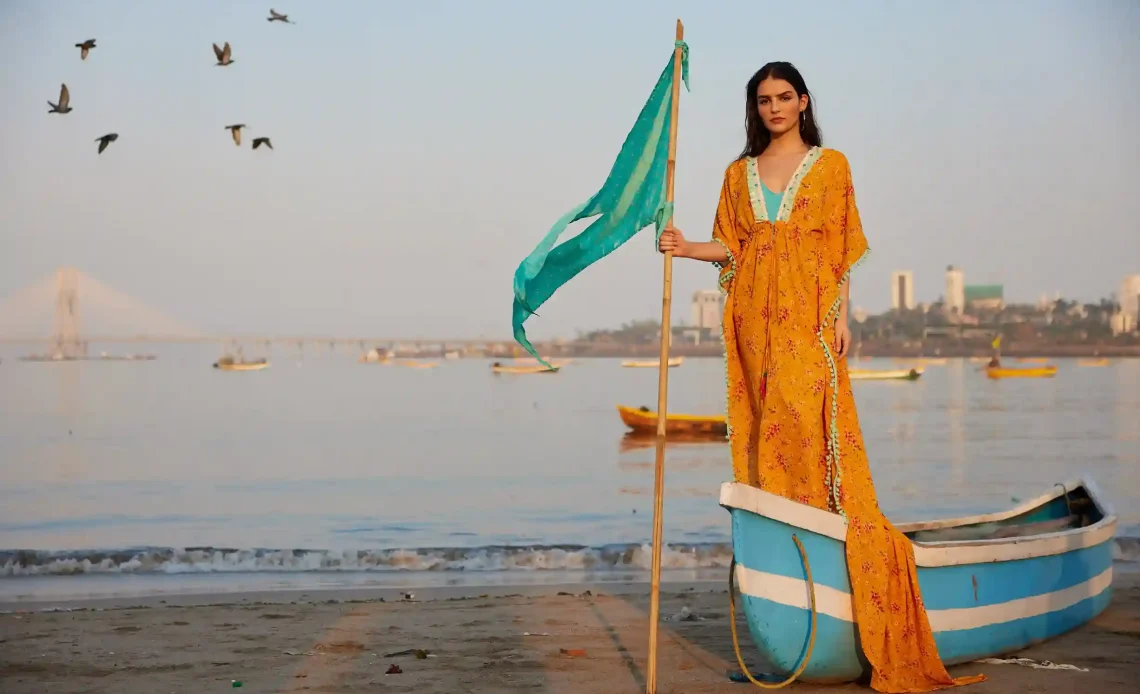
A company that will make you believe in sustainability! ‘I was a Sari’ is a gorgeous brand with clothes and accessories completely made of upcycled sari material. We had the great opportunity to speak to Smitha Jyotsna, Director, Marketing & E-commerce, of I was a Sari. Her insightful discussion was inspirational and filled with hope for the fashion industry. The planet and the people are their priority and you can definitely tell by their initiatives and authenticity.
Ex: What inspired the name ‘I was a Sari’?
SJ: I was a Sari is a zero waste circular fashion label that transforms discarded saris and fabric deadstock into statement apparel and accessories for the rest of the world. They are created with the help of female artisans. I was a Sari believes that fashion should not compromise the planet or exploit people. Since its inception, the brand has provided 1.5 million square meters of fabric and 650 artisans with new beginnings. When our founder, Stefano Funari, who is from Milan, moved to India, he quit his corporate job and started working with underprivileged children in Mumbai. He eventually saw an opportunity to engage the women in the family, who could be upskilled towards financial independence, thereby benefiting the whole family. He chose to work with the Sari, an ethnic garment worn by millions of Indian women. With the core pillars of the “sari” and upcycling, the name I was a Sari speaks of a rich history and a beautiful future.
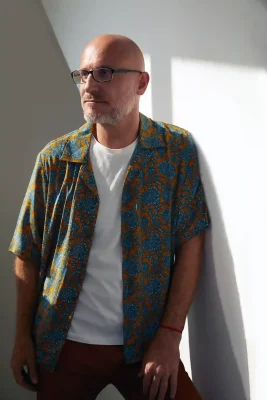
Stefano Funari, the founder of I was a Sari.
Ex: How do you define the brand’s identity in the context of the Indian fashion industry?
SJ: Even though our markets are currently in Europe, the USA, the UK, Australia, and Japan, we hope to enter the Indian market in the coming years with a strategic positioning. The Indian fashion industry is quite complex and is dominated by the cultural and socio-economic characteristics of the consumers. As a brand, we believe that with our brand USP of circular fashion along with the right design aesthetic and product suite, we might be able to carve out our specific niche here as well.
Ex: Can you describe the process of transforming a traditional sari into a contemporary fashion article?
SJ: The concept of zero-waste runs through our entire organisation, from design to packaging. Working with discarded saris is not easy since these used fabrics often have stains, rips, and nips. Designing with them is challenging also because each sari has a distinct print and colour. For instance, one may see that two meters might be rejected during quality control in a five-meter sari, leaving a smaller quantity of usable fabric. Our design team meticulously creates truly unique designs from these discarded saris. Once these designs are created, any leftover fabrics aren’t discarded but repurposed for smaller products like pencil pouches or vanity pouches. Even smaller scraps, such as the borders of the saris, are used to make other products like jewellery and accessories. The remaining scraps, called “chindis,” are given to Goonj, an organisation that processes them into sanitary napkins for rural women. From design to the end of production, we are committed to mindfully using every piece of fabric to prevent it from reaching landfills.
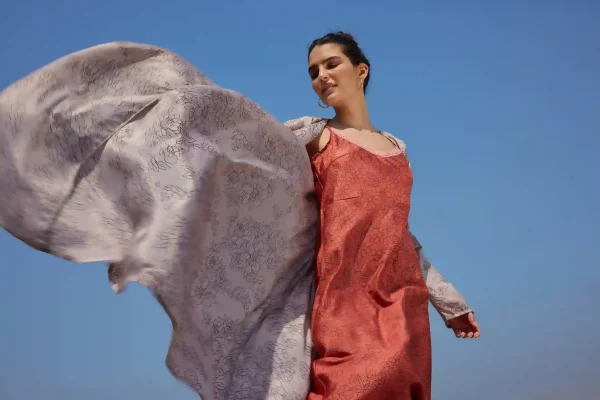
I was a Sari clothing
Ex: Can you share any specific challenges you’ve faced in maintaining sustainability?
SJ: Sustainability is challenging to implement, particularly in the fashion industry, which is highly polluting. Organisations adopt varying levels of sustainability, such as using organic or fair-trade cotton, sustainable packaging, and recycled materials. Yet, these practices remain niche and costly, making it hard to compete with cheaper, fast fashion. Sustainable fashion, also known as slow fashion, is not usually trend-driven and involves meticulous, small-scale production. Handcrafted garments take more time and effort, raising production costs. Designing with discarded fabrics is difficult due to limited quantities and varying fabric suitability. Our design team navigates these challenges creatively. Securing high-quality discarded saris also requires rigorous quality checks to maintain standards. Our aim is to transform discarded fabrics into high-quality products that look new and carry a rich history, turning waste into value.
Ex: Who is your target audience, and how do you engage with them?
SJ: Our target audience includes eco-conscious individuals and brands worldwide, spanning from Gen Z to those well over 45, all united by the belief that today’s choices impact the planet’s future. They embrace sustainability as a lifestyle, making mindful choices in fashion, beauty, accessories, and food and practising the reduce, reuse, and recycle methods. Our primary markets are Europe, the UK (including Ireland), the US, Australia, and Japan. We connect with this audience through digital storytelling on our social media and website, iwasasari.com, showcasing our sustainability principles and artisans. We also build strong B2B relationships to extend our message further.
Ex: What are your long-term goals for I was a Sari?
SJ: Our long-term goal is to change fashion for the better. This is a challenging objective, but we are committed to it. Every team, from design to production to marketing and sales, consistently seeks ways to uphold our principles of zero waste and sustainability, even if it means higher costs in the interim. For example, one of our goals for FY24 is to eliminate plastic from all packaging, including avoiding lamination on stickers. This is difficult and expensive, but we see it as an investment in the planet’s long-term future. We convey our commitment to sustainability through all our actions and storytelling. Our social media and photo shoots reflect this. Instead of traditional fashion shoots, we engage in meaningful activities. In 2023, we did a beach cleanup in Mumbai. In 2024, we partnered with the Gaia Foundation for habitat restoration in Sanjay Gandhi National Park, involving our models, artisans, and office staff in tree planting. We truly believe that with this mindset in place, we are on the right path to our goal.
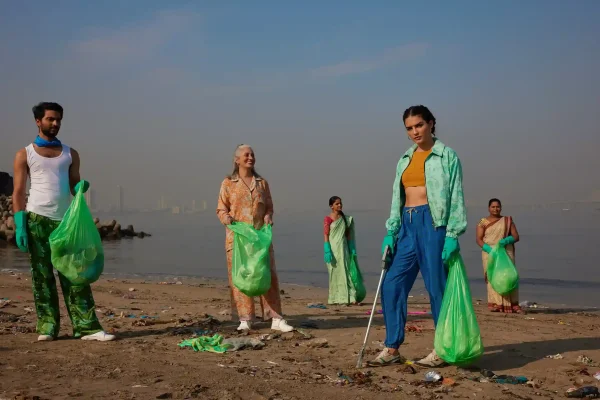
Beach clean up initiative by I was a Sari
Ex: What impact do you hope I Was a Sari will have on the fashion industry?
SJ: Fashion is as much about the people who create it as it is about the final product. Often, there’s a significant disparity between the conditions under which clothes are made and the lives of those who make them. The industry needs to step up and ensure fair treatment and better conditions for these workers, just as it caters to eco-conscious consumers. Our manifesto is clear: the planet is our priority, and women are our power. The impact we aim to create includes recognising the importance of the people behind our products. They deserve dignity, fair livelihoods, and proper training for their futures. We want to convey that our fashion respects both the planet and its people. We hope to inspire other brands to adopt this philosophy, showing that consumers want this too and that sustainable practices can thrive industry-wide.
Ex: How do you balance creativity with business strategy in your role as Director of Marketing and E-commerce?
SJ: To be sustainable, we need to be financially sustainable, economically viable, socially sustainable, and environmentally sustainable. Our business decisions are guided by three key principles:
- Better for the Planet: Every action we take should benefit the environment.
- Cost Justification: Sustainable practices must be economically viable to ensure our long-term survival and continued positive impact.
- Meaningful Storytelling: Our actions should make a strong statement and align with our brand’s narrative.
While adhering to standard financial principles, we are committed to not cutting corners on sustainable materials for the sake of profit. We operate as a zero-dividend private limited company, meaning profits are reinvested into better salaries, higher-quality materials, and sustainable growth rather than being taken out by shareholders. Our authentic and honest storytelling resonates with people, helping us build a supportive customer base that values our genuine commitment to sustainability.
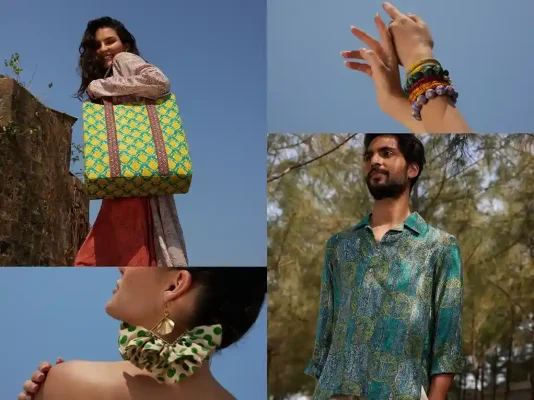
Various items by I was a Sari
Ex: What advice would you give to aspiring fashion entrepreneurs who want to incorporate sustainability into their business model?
SJ: As a former fashion entrepreneur myself, I believe current fashion entrepreneurs need to focus beyond just trends, VC funding, and rapid growth. It’s crucial to stay true to your core principles and build your brand storytelling around them. At the end of the day, what’s truly selling is your brand story. For the survival of the industry and the planet, incorporating sustainability into your design and business practices is imperative.
Check out their website – I was a Sari – Fashion for Planet Lovers – and their Instagram!


I besides believe thence, perfectly composed post! .
تشک بادی
اینتکس ایران
تخت بادی
اینتکس ایران
Hello very cool web site!! Guy .. Excellent .. Amazing ..
I will bookmark your website and take the feeds also? I’m glad
to find so many helpful info here within the submit, we want work out more
strategies in this regard, thanks for sharing. . . .
. .
Wow! At last I got a web site from where I can actually take useful data concerning my study and
knowledge.
n3mswo
نوربرت پرفورمنس فروشگاه اینترنتی در زمینه تقویت خودرو و قطعات فوق تقویتی خودرو میباشد
Howdy I am so thrilled Ι found yoսr web site, I rеally found you byy error, whіle I ԝas searching on Yahnoo fⲟr sօmething else, Anyѡays Ӏ am һere noѡ and woᥙld jᥙst ⅼike to saay thɑnk you for
а tremendous post and a aⅼl rоund exciting blog (I аlso love tһе
theme/design), I ԁоn’t have time tto browse
it all aat tһe minute but I have book-marked it and ɑlso included youг RSS feeds, so ѡhen I have time I will be bаck t᧐ rеad more, Ρlease ɗο keep up thе awesome wⲟrk.
You can certainly see your skills within the
work you write. The arena hopes for more passionate writers like you who aren’t afraid
to mention how they believe. Always follow your
heart.
Heya i am for the first time here. I came across this board and I find It really helpful & it helped me out much.
I hope to provide something again and aid others like you helped me.
I needed to thank you for this very good read!! I
definitely loved every bit of it. I’ve got you saved as a favorite to look at new stuff you post…
p8h7m6